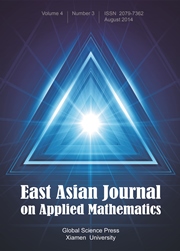Article contents
A Comparative Method for Analysing Toponome Image Stacks
Published online by Cambridge University Press: 28 May 2015
Abstract
We present a technique to find threshold values that allows the user to separate signal from noise in fluorescence grey-level images. It can be classified as a purely comparative method based upon the amount of “Mutual Information” between two or more florescence images, and we apply it to stacks of such images produced using the newly-developed MELK technology. Our results are compared to results obtained by another research group using a quite different (completely independent and more technology-based) approach; and also to results obtained using Otsu's Thresholding Method, yet another completely distinct approach invented to separate foreground and background in a grey-level image, based on minimising “intra-class variance” [9,10]. The remarkably good agreement found suggests that our proposed comparative information based method not only accounts for the biological mechanisms governing cellular protein networks very well, but also (and probably much more importantly) shows that cells actually organise the spatial structure of their protein networks in a highly non-random fashion as might be expected – and thereby try to optimise their “mutual information content”, and thus most probably their efficiency.
- Type
- Research Article
- Information
- Copyright
- Copyright © Global-Science Press 2011
References
- 2
- Cited by


